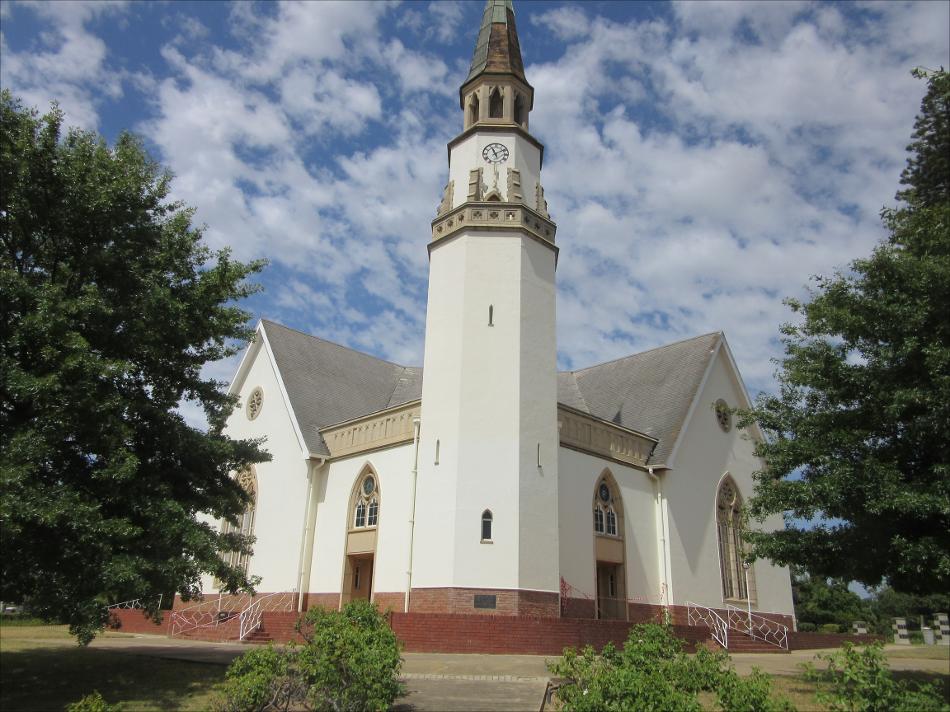Drakenstein, Wellington North, Dutch Reformed Church

View/
Author
Whitechapel Foundry
Mears (Firm)
Date Created
1958Format Extent
9 colour photographs1 spreadsheet
Rights
These items are subject to copyright protection. Reproduction of the content, or any part of it, other than for research, academic or non-commercial use is prohibited without prior consent from the copyright holder.Stellenbosch University
Metadata
Show full item recordAbstract
The Nederduits Gereformeerde Kerk in Wellington-Noord, dating from 1957, has a narrow high tower containing a bell. There are two pairs of moulding wires below the shoulder, three above the knee and two on the lip. On the waist one finds a small emblem of the founder and above it the text: CAST FOR WILL. W. KEAY & SON, CAPE TOWN, 1958. The emblem of the founders sits just above the sound bow. The emblem refers to members of the family Hughes that worked in the Whitechapel Foundry that was started by George Mears, whose name figures on the joke of the bell. The emblem is a circle in which figure three bells. A large bell stands in the middle of the seal and is surmounted by a crown. On the left of the bell stands AA/H (for Albert A. Hughes) in two layers, on the right WA/H (for William A. Hughes) also in two layers. Below the large bell stands DH (for Douglas Hughes) in between two smaller bells. The three founders worked together over the period 1950 until 1964. On the reverse side we find remnants of a paint that was put on the bell prior to its shipping to Cape Town. What we know about William Keay is that he was a constructor and/or deliverer of church clocks and that his firm ordered hour bells for the clocks at other foundries. The many locations in the Western Cape that were helped during the period 1950-65 had their bells made at the Whitechapel Bell Foundry. In the sixties of last century, the agent switched to Petit & Edelbrock in Germany.
Collections
- Drakenstein [21]
